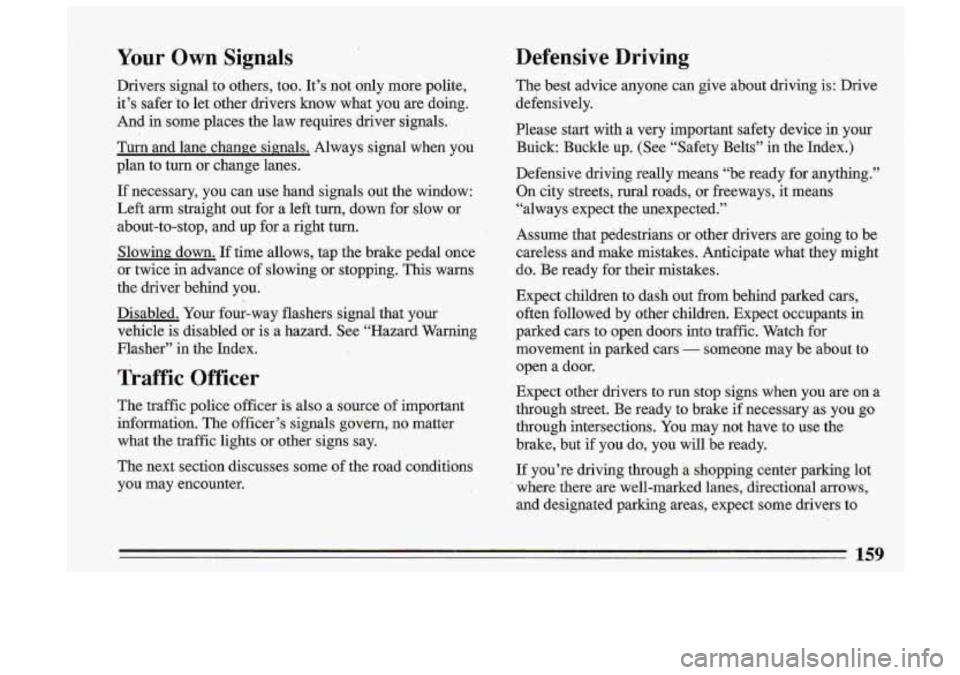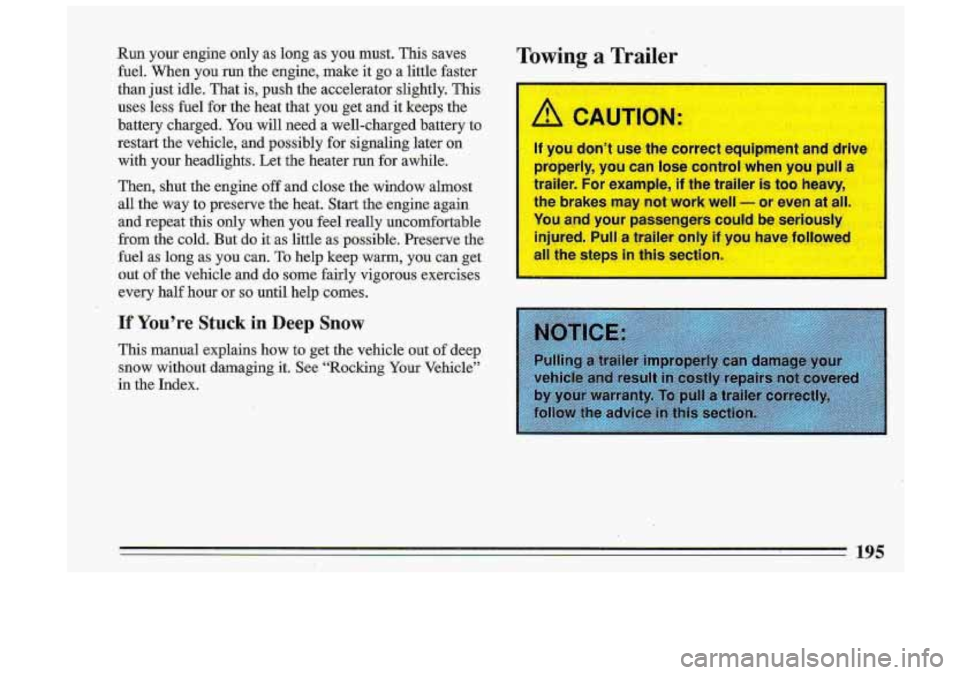Page 96 of 340
Cruise Control (Option) ,* .. :. .> ..
..
";. ?y . ..
I you can't drive safely at a steady speed.
So, don't use your Cruise Control on
winding roads or
in heavy traff'
Cruise Control can be dangerous
slippery roads. On such roads, fast
changes in tire traction can cause
needless wheel spinning, and you
COI
lose control. C tt I ~ = P ise ^ontrol on
I
lippel- poads
With Cruise Control, you can maintain a speed of about To Set. Cruise Cc-trol
25 mph (40 km/h) or more without keeping your foot on 1. Move the Cruise
the accelerator. This can really help on long trips. Cruise Co\
ntrol switch 'to
"ON."
Control does not work at speeds below about 25 mph ;.'
When you apply your brakes, the Cruise Control shuts i. 'I
.Off.
NOTE: On the Estate Wagon, if the tailgate window is
not completely closed the cruise control will not work.
(40 k-yn/h).
Page 104 of 340
Wagon Rear Lompartment Light and
Assist Handles .
There are courtesy lights and assist handles in the rear
compartment located on each side
of the tailgate
window.
Mirrors
Inside Mirror
When you are sitting in a comfortable driving position,
adjust the mirror
so: you can see clearly behind your car.
The day-night adjustment allows you
to adjust the
mirror
to avoid glare from the lights behind you.:
Page 106 of 340
Cleaniqg Photocells
Use a cotton swab and glass cleaner to clean the two
photocells that make the mirror work.
Outside Mirrors
Manual
To adjust the.left outside mirror, rotate the knob located
on the driver's.
door. The right outside mirror must be
adjusted manually. Adjust each mirror
so you can just
see the.
side of your vehicle.
.. .i I * :
1-
Power (Option)
If your -Buick has the
optional power mirrors, the
mirror control
is located on
the driver's door. .Rotate. the
control
to the left or right to
choose the mirror you want
'to:.%dj,wst.
Then move the
control in the direction you
want to move the mirror.
Adjust each
mirror so you
can
just see the side of your
car and the area behind
your car.
Heated Outside Rearview Mirror (Option)
The left outside mirror is. heated when you activate the
rear window defogger.
Page 133 of 340
Defrost Rear Window Defogger (Option)
This setting will direct most
of the air flow toward the
windshield. Use this when
there is fog
or ice on the
windshield.
Defrost will work better
if any ice and snow is cleared
from the hood and the air inlet area between the hood
and the windshield.
Blower speed will be controlled automatically,
or you
can choose another speed by pushing the HI or LO
buttons.
If you have the heated outside rearview mirrors option,
the mirrors will be warmed when the rear defogger
is
on.
131
Page 136 of 340

Rear Window Defogger (Option)
The lines you see on the
rear window warm the glass
to remove fog and ice. Turn'
the control on' to start
warming your window.
After
a few minutes; it will
turn off automatically.
Audio Sysxems
Your Delco@ audio system has been designed to uperate
easily and give years
-of listening pleasure. But you will
get the
most enjoyment out of your system if you
acquaint .yourself with it first. Find out what your
Delcos system can do and how to operate all its
controls, to be sure you're getting the most out
sf the
advanced engineering that went into
it.
FM Stereo
FM stereo will give you the best sound. But FM signals
will reach only about
10 to 40 miles (16 to 65 km). And,
tall buildings or hills can interfere with FM signals, causing the
sound to come and go.
AM
The range for most AM stations is greater than for FM,
especially at night. The longer range, however, can
cause stations to interfere with each other.
AM can pick
up noise from things like storms and power lines. Try
reducing the treble
to reduce this noise.
Page 161 of 340

Your Own Signals Defensive Driving
Drivers signal
to others, too. It’s not only more polite,
it’s safer ‘to let other drivers know what you are doing.
And in some places the law requires driver signals.
Turn and lane change signals. Always signal when you
plan to turn or change lanes.
If necessary, you can
use hand signals out the window:
Left arm straight out for
a left turn, down- for slow or
about-to-stop, and up for a right turn.
Slowing. down. If time allows, tap the brake pedal once
or twice
in advance of slowing or stopping. This warns
the driver behind you.
Disabled. Your -four-way flashers signal that your
vehicle is disabled or is a hazard. See “Hazard Warning
Flasher” in the Index.
Traffic Officer
The traffic police officer is also a source of important
information.
The officer’s signals govern, no matter
what the traffic lights or other signs say.
The next section discusses some of the road conditions
you
may encounter. The
best advice anyone can give about driving is: Drive
i
defensively. !
Please start with a very important safety device in your
Buick: Buckle up. (See “Safety Belts” in the Index.) i
Defensive driving really means “be ready for anything.”
On city streets, rural roads, or freeways, it means
“always expect the unexpected.”
Assume that pedestrians or other drivers are going to be
careless and make mistakes. Anticipate what they might
do. Be ready for their mistakes.
Expect children to dash out from behind parked cas,
often-followed by other children. Expect occupants
in
parked cars to open doors into traffic., Watch for
movement
in parked cars - someone may be about to
open a door.
Expect other drivers to run stop signs when. you are on a
through street. Be ready to brake if necessary
as you go
through intersections. You may not have
to use the
brake, but if you do, you will be ready.
If you’re driving through a shopping center parking lot
where there are well-marked lanes, directional arrows,
and designated parking areas, expect.some drivers to
159
__
Page 196 of 340
blanket around you. If you have no blankets or extra. II
clothing, make body insulators. from newspapers, burlap I CAUTION: (Continued)
bags, rags, floor math - anything you can wrap around 3pen a window just a Iihz oh &he side of the
yourself OX tuck under your clothing to keep warm. ._ .. ,... r’ ,. . I vehicle that’s away from the wind. This will helr
Yon can run the engine to keep warm, but. be careful.
,. ,
/A CAUTION:
Snow can trap exhaust gases under your
vehicle. This can
cause deadly CO (carbnn
monoxide)
gas to get inside. CQ could
overcome you and kill you. You can’t see it o
smell it, so y~u might not know it was in you1
vehicle. Clear
away snow from around the base
of your vehicle, especially any that is blockina
your exhaust
gibe. And check around again
from time to ti P to be sure snow doesn’t
collect there.
CAUTION: (Continued)
Page 197 of 340

Run your engine only as long as you must. This saves
fuel. When you
run the engine, make it go a little faster
than just idle. That is, push the accelerator slightly. This:
uses less fuel for the heat that you get and it keeps the
battery charged.
You will need a well-charged battery to
restart the vehicle, and possibly for signaling later
on
with your headlights. Let the heater run for awhile.
Then, shut the engine
off and close the window almost
all the way to preserve the heat. Start the engine again
and repeat this only when you feel really uncomfortable
from the cold. But do
it as 'little as possible. Preserve the
fuel
as long as you can. To help keep warm, you can get
out of the vehicle and
do some fairly vigorous exercises
every half hour or
so until help comes.
Towing, a Trailer
/! CAUTION-
If you don't use the correct equipment and drive
properly, you can lose control when you
pull a
trailer.
For example, if the trailer is too heavy,
I the brakes may not work well - or even at all,
You and your passengers could be seriously'
injured. Pull
a trailer only if you have followed
I the steps in this section.